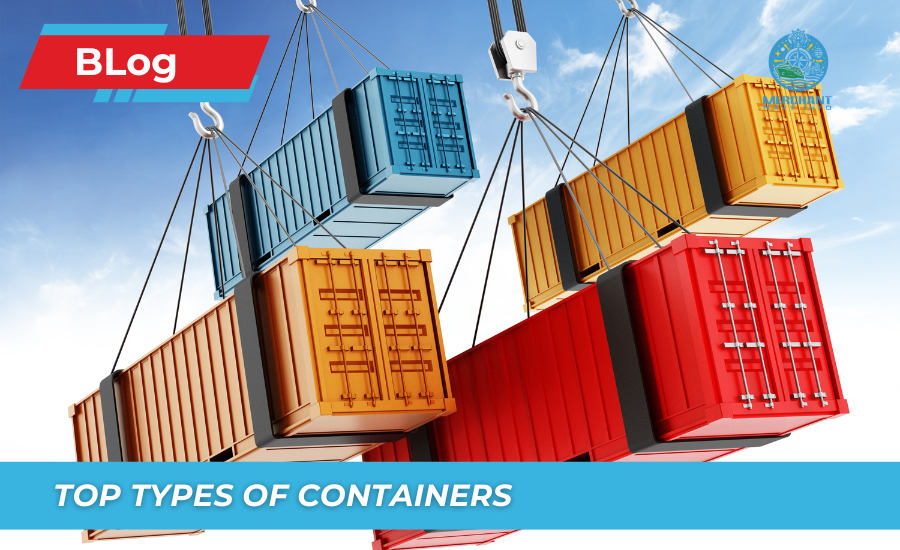
Top Types Of Containers
From the advent of the first containers in the 1950s to the present day, a wide variety of ocean and intermodal containers have emerged as a response to the logistics chain to ensure the correct handling of cargo. Key points to remember are the size and weight of the load, the nature of the charge, whether solid or liquid and the uniformity of charge. Here, we have listed some of the most common types of containers or the type of crane and spreader required for the cargo.
- Dry storage container
- Flat rack container
- Open top container
- Open side storage container
- Refrigerated ISO containers
- ISO Tanks
- Half height containers
- Special purpose containers
1. Dry storage containers
Dry storage containers are the most commonly used containers in the shipping industry. They are available in lengths of 20 feet, 40 feet, and 45 feet and are designed to transport dry goods. Therefore, these containers cannot control temperature and are unsuitable for transporting food or chemicals that require refrigeration. There are approximately 17 million intermodal containers worldwide, and a large proportion of long-distance cargo generated by international trade is transported in ocean containers. Their inventions made a major contribution to the globalization of trade in the second half of the 20th century, significantly reducing the cost of transporting goods and, thus, the cost of long-distance trade.
2. Flat rack containers
Flat rack containers have no top, only two sides. This allows heavy objects to be placed on the rack from above or from the side. Most flat rack containers are 20 or 40 feet long and made of steel for strength and durability. Some are foldable, and some have additional walls that can be attached to the frame.
3. Open top containers
This container is basically a dry storage type but without a lid. This allows bulk cargo to be loaded easily. A plastic roof structure can be fastened to the container with ropes to protect it from rain and other forms of precipitation.
4. Open Side Storage Containers
Side-opening containers have one long side that can be opened completely. This is useful for wide cargo that may be difficult to fit through a tunnel container or at the end of a dry storage container. The sides can be opened like two large doors but can still be secured to protect the cargo inside.
5. ISO Refrigerated Containers
A refrigerated or reefer container is an intermodal container used for land transport to transport temperature-sensitive cargo. While a refrigerated container will be equipped with an integrated refrigeration unit, it relies on an external power source from a power point (“refrigeration point”) on land, on a container ship, or at a terminal. When transported by road on a trailer or train, they can be powered by a diesel generator (“genset”) connected to the container during the journey. Refrigerated containers can control temperatures ranging from -65°C to 40°C.
6. ISO Tanks
Storage tanks are storage containers designed to hold liquids. They are usually made of corrosion-resistant materials, as they are used to carry chemicals. Storage tanks can also store dry goods such as sugar but are generally only used to store liquids.
7. Half-height Containers
These containers are primarily made of steel and are half the height of a full-size container. They are particularly useful for cargoes such as coal, stone, etc., that require easy loading and unloading. This type of container is increasingly being used for bulk cargo packed in containers.
8. Special Purpose Containers
Specialized containers can be manufactured in almost any shape or size. They are used to transport items that require a specialized container to be created for them. Most shipping lines avoid using specialized containers whenever possible because they are expensive to build and ship. However, they are necessary for certain loads.
Conclusion
Last, different types of containers are used to transport goods around the world. The shipping industry relies on various containers, from standard dry cargo containers to specialized refrigerated containers for perishables, to transport goods safely and efficiently. Choosing the right type of container is essential to ensure the successful delivery of your cargo.









